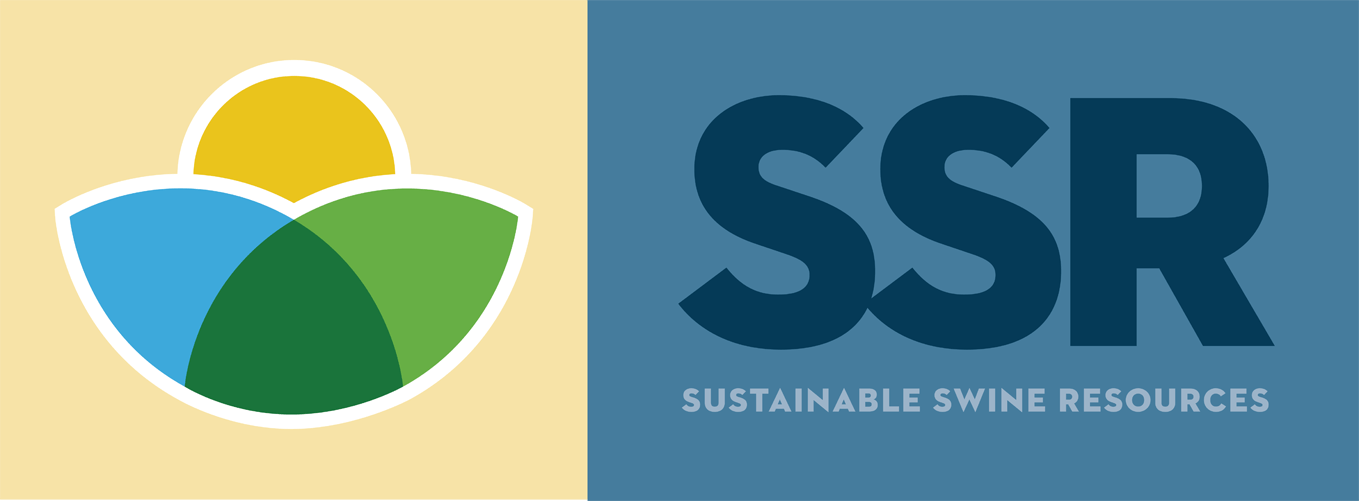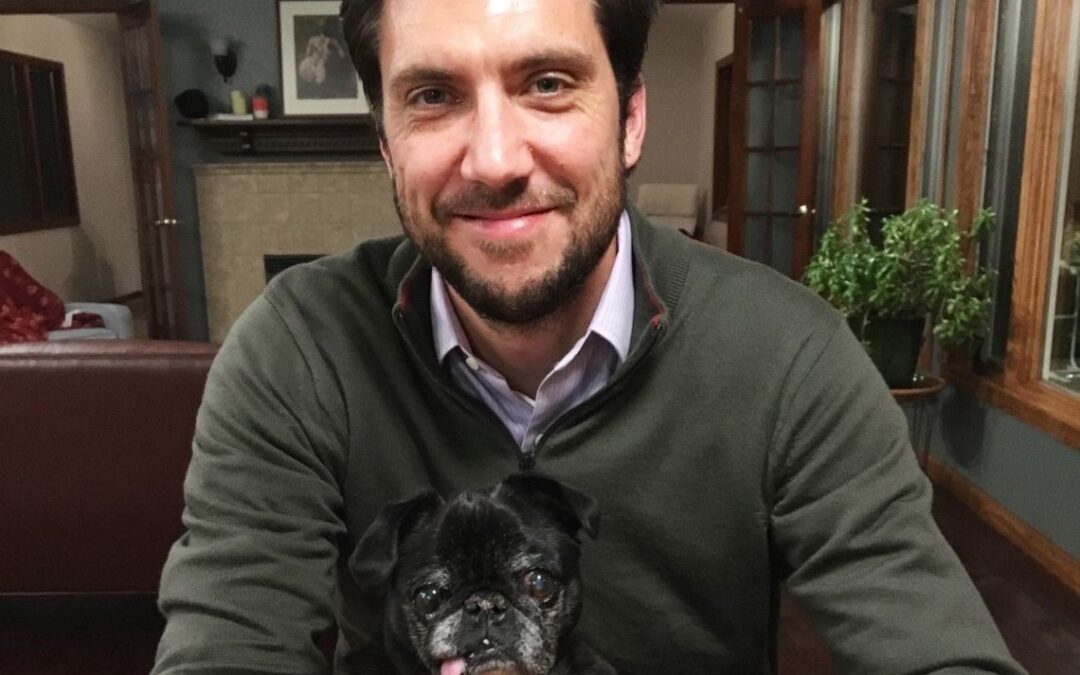Interview with Director of Animal Welfare – Johnsonville – Ben Peyer Part II
Below is the second of a 3-part series of interviews with Ben Peyer, Director of Animal Welfare at Johnsonville, the parent company of SSR. In this installment, we cover two big topics: pregnant sow housing and whether raising animals for food can be compatible with high animal well-being.
Q: Why do you think some animals get more attention in animal welfare issues than others (farms animals vs. insects vs. fish)?
A: It’s a combination of our intellectual belief about an animal’s capacity to suffer and our emotional connections with those animals. Let’s look at two examples of animals that aren’t usually raised for food: dogs (on the one hand) and fruit flies (on the other). Anyone who has had a dog as a companion has no problem understanding their dog’s state of mind. Dogs are what they are because they understand us and make themselves understood by us. In the same way, modern humans have evolved to understand, and to be understood by, dogs. So we humans know for sure that dogs can suffer, and when a dog is suffering it affects us. The disgust most people feel if they see or imagine a dog being abused is a sensory presence, like pain, rather than an emotion like sadness.
To contrast, fruit flies are inscrutable. It’s certainly not obvious, from a scientific perspective, that fruit flies have the sorts of conscious experiences that could be thought of as suffering. And if I try to empathize with a fruit fly, I can’t quite get there; there’s an empty spot in my mind where I tried to put that idea.
These are extreme examples that help clarify the attributes that matter. Farm animals have their places on that same spectrum. Pigs, who are like dogs in important ways, will – all things equal – get the most attention. Crickets, who are raised for food in not-insignificant numbers, fall on the other end of the spectrum; their care and well-being get very little attention.
In recent years, animal advocacy groups have shifted their focus away from relying solely on empathy as a criterion for choosing their areas of work. As a result, much of their attention has moved to fish, who are difficult to empathize with but are raised and slaughtered in huge numbers without any thought given to their subjective well-being.
Q: What are the most important animal welfare topics in the swine industry, and how is the industry addressing these concerns?
A: The biggest issues in swine welfare are pregnant sow housing and so-called “routine mutilations” like castration and tail docking, which are typically performed without pain relief. There are other issues, but these are the big ones. The American Veterinary Medical Association has good summaries of these and other welfare concerns on its website.
Until the late 1970s, most sows were housed together in pens. Pigs are social animals (like humans) but (also like humans) this doesn’t mean they’re always polite to one another. Conflicts over social hierarchy, food, and the best resting spots can make pens dangerous places to be, especially for those sows at the bottom of the social hierarchy, who are often injured, malnourished, and chronically stressed. Keeping sows in groups can also make providing individual care difficult. Moving sows to gestation stalls – individual pens, about 2.5 by 7 feet – is a way to avoid these problems and improve productivity, so the industry transitioned away from group housing. By the early 2000’s, more than 90% of pregnant sows were kept in gestation stalls.
The higher productivity came at a serious cost: sows simply cannot have high subjective well-being while confined in a pen too small to allow any real movement, social interaction, or other behaviors central to pig-ness. Because close confinement is what creates the “benefits” of gestation stalls, there is no way to change stalls in a way that solves the welfare problems they create.
Improvements to traditional group housing are available, however. Conflict over social hierarchy can be minimized by keeping the same group of sows together for as long as possible. Conflict over food can be minimized by practices that guarantee each animal will have access to their own rations, while at the same time allowing workers to care for individual sows. And because wall space is prized – sows like having something to lean against, apparently – different pen configurations offer benefits here as well.
The call to switch from gestation stalls to animal-friendly versions of group housing has been driven mostly from outside the industry – activist groups and consumers – and has met determined resistance. Today, about 30% of all sows are raised in modern group housing (or better) systems, despite widespread commitments by retailers and meat companies to be fully transitioned away from gestation stalls by 2025 or earlier.
No housing system is perfect, but gestation stalls are irredeemably flawed and cannot produce absolutely high welfare. Accordingly, in 2013, Johnsonville publicly committed to remove gestation-stalls from its supply chain by 2025. More recently, Johnsonville told its suppliers that by 2022 we would provide gestation-stall-free products to any customer who asks for them. A cornerstone of Johnsonville’s success is having the “Highest Impact on Customer Success”, and helping our customers keep their promises to consumers while promoting better animal welfare is an obvious way to do that.
Q: Does raising animals for food go against animal welfare?
A: I’m an animal welfare activist who works for a meat company, so I think about this every day. Whether or not death is a welfare issue – I think it isn’t – there is no question that suffering is bad, and that it is immoral to cause suffering when other choices are available.
I don’t expect to convince anybody to change their mind about whether death is harmful for the thing that died, so I won’t present my argument that says it isn’t. Reasonable people can disagree on this topic, especially when the very capacity to be reasonable has evolved to keep us alive, which if you think about it makes it unlikely that we can have unbiased thoughts about whether staying alive is good for us.
I will argue, however, that death should not be included in a tally of whether a certain way of getting food is good or bad. Trees and grasses and the like – autotrophs – “eat” the sun and the air and need not truck with death. We humans are heterotrophs, which means we cannot just conjure up our own food out of thin air. We must eat a (currently or formerly) living organism in order to extend our own lives.
If we cannot avoid causing the death of something in order for us to eat (and live), the only moral difference between ways to eat must be about how our food is produced, in this context, the quality of life our food enjoyed while it was alive. Has your apple lived a good life (for an apple)? Great. Has the pig that came to be your pork chop lived a good pig life, recognized by her caretakers as a being with intrinsic value, and respected as such? Fine. I personally see no moral difference between an apple that lived a good apple-life and a pig that lived a good pig-life that convinces me we should prefer to eat the apple. (If you’re thinking that it’s much more difficult to provide a good pig-life to a pig than a good apple-life for an apple, I agree. I eat apples but don’t rule out eating pigs.)
Death is not an animal welfare issue because animal welfare is about how animals feel. It is perfectly consistent with high levels of animal welfare for farm animals to be raised with compassion and respect, not to be suffering in anways, and to be provided with the sorts of food, environment, and companionship that allow lives full of positive subjective experiences, and then killed in a stress- and pain-free way for food.
Q: It seems strange that a person who cares so deeply about animals would be working for a meat company. Do you agree?
A: I’d say it’s strange that people with my background and outlook are so uncommon in positions like mine at meat companies. The very fact of my hiring was a signal that Johnsonville had nothing to hide even before it had a formal animal welfare program, but also that they wanted to be challenged to do better. Since then, my team – made up of people in different functions who care as deeply as I do and have all volunteered to take time out to do animal welfare work – has gotten such strong support from our executive team that we consider our program to be vital to the company and leaders in the industry. It’s important work that we’re grateful to be able to do at Johnsonville.
In Part III of our Q&A, we’ll talk to Ben about the work Johnsonville is doing to improve animal welfare, and what their work means for customers of SSR. If you happened to miss Part I of the Q&A, you can find it here.
Let's Collaborate
With SSR and Johnsonville LLC, we offer flexible partnership options. Let's explore how we can work together to achieve your goals.


